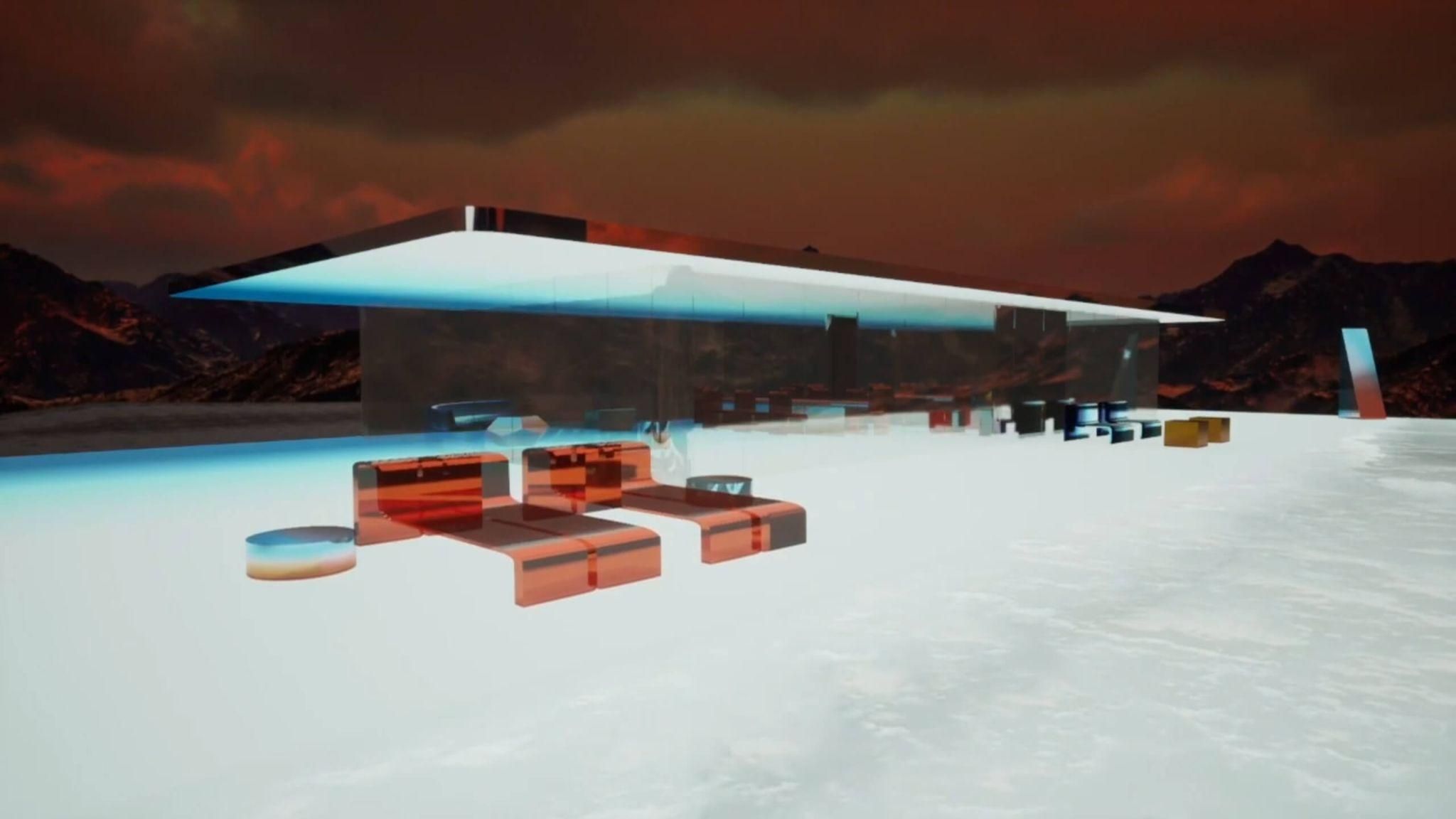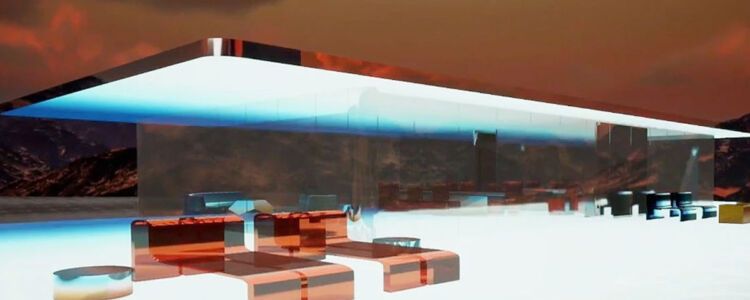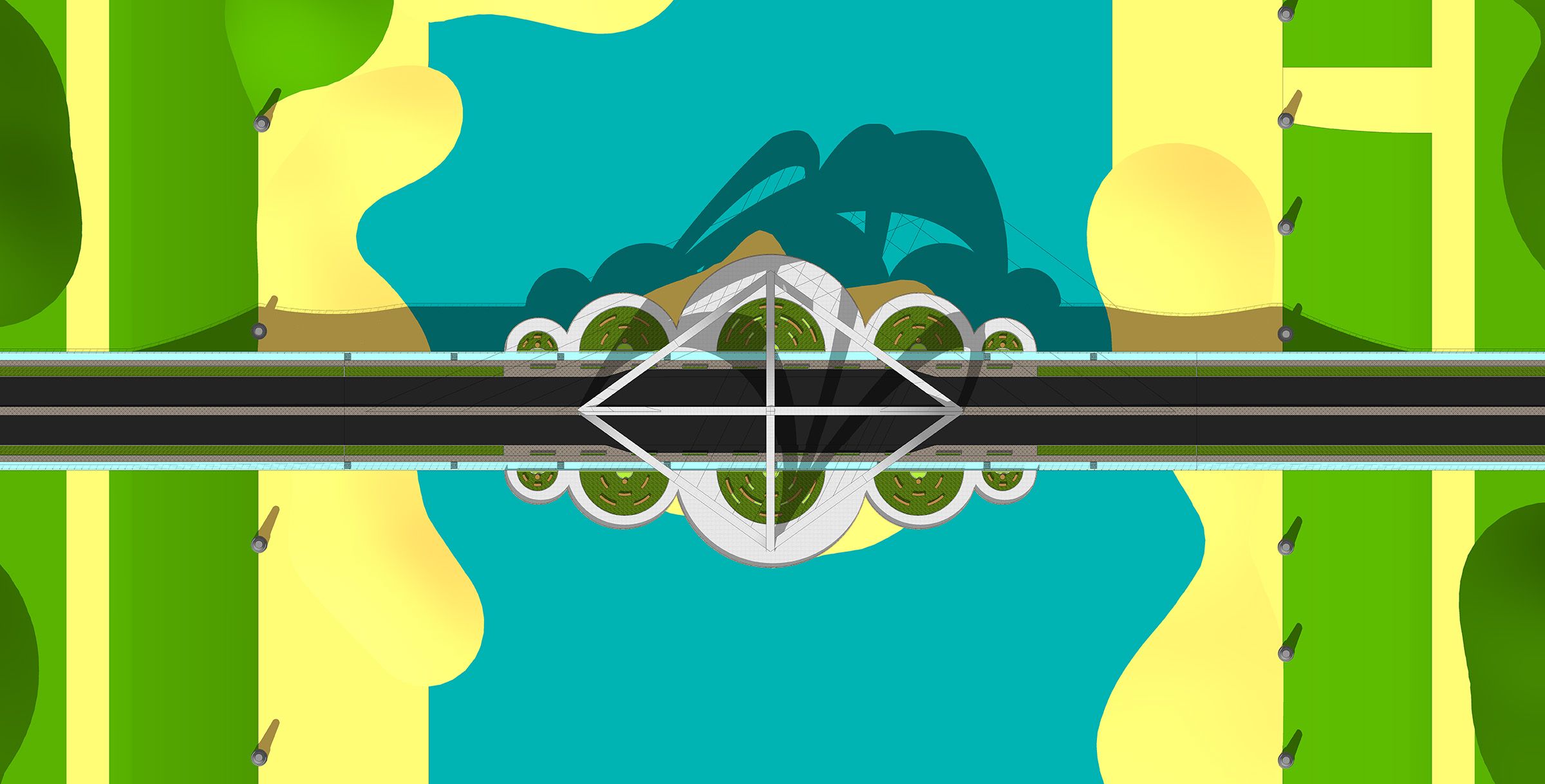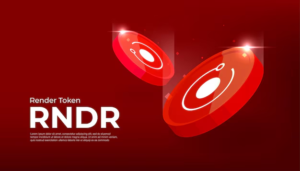One good thing that came out of the COVID-19 pandemic is the rise of NFTs, and their implications for architecture. Building the metaverse presents new opportunities for architects, and with NFTs, designers are making big money.
“NFT” is the latest buzzword in tech, and it’s not surprising that it was selected by Collins Dictionary as the word of the year. 3D artist Alexis Christodoulou is right to believe that NFT is a new frontier for design.
Jack Dorsey, Twitter’s founder, minted his first tweet in 2006 as an NFT and on Monday, sold it for $2.9 million dollars to Sina Estavi, a businessman from Malaysia. Even the New York Times has created a column as a blockchain NFT. If the current hype about NFTs is anything to go by, fantastic NFT stories are only going to increase.
The image below is the “Mars House”, a rendered 3D virtual home designed by Toronto-based artist Krista Kim during the COVID-19 lockdowns, and after she minted it as an NFT, it reportedly sold for an incredible $500,000.

Image Courtesy of Kim
The digital 3D house is not very interactive, but it dawns a new era of architecture design. NFTs have brought in a new mix of speculative design, and as the metaverse grows, buildings will become more interactive and realistic.
Know more about Generative and Algorithmic Design in Architecture
What are NFTs?
Basically, fungible crypto tokens are equal and can be swapped for others, for example, one Bitcoin and another. However, Non Fungible Tokens (NFTs) are unique and irreplaceable blockchain tokens, much like Picassos. If you own a Picasso, you are certain that no one else has a similar Picasso. Yours is unique. This non-fungibility makes NFTs a suitable way of recording the ownership history of a digital asset, making the item ‘unique’ in the sense that only one authentic copy exists and has one owner. NFT based assets can still be copied over the internet, but only the authentic owner can sell the artwork. This is definitely good news for digital artists, who are now assured of getting paid for their NFT-based work.
We are offering some of our architectural renderings as an NFT. You can check them out on opensea.io above.
NFTs are based on blockchain technology
NFTs are the latest application of blockchain technology and were developed out of the ERC-721 standard, which defines an interface with minimal details on ownership, security, and metadata. It facilitates the exchange of tokens among users on a blockchain.
A blockchain is an immutable, distributed ledger of information that cannot be edited. Data is stored in “blocks”, unlike the tables in a regular database, and each new block is hooked to the previous one, forming an immutable chain of blocks.
Blocks are distributed across multiple computers around the world, ensuring that as long as the internet remains, the system will always work. The most common use of blockchain technology has been to store financial transactions in cryptocurrencies.
Architects produce beautiful, skilful and artistic images as concept art or unbuilt speculative designs. These images are not primarily produced for consumption as art, but this is now changing with digital architecture.
Virtual worlds & the metaverse
Virtual worlds are realistic, interactive digital worlds where you can own land, build skyscrapers, fly hoverboards over 3D cities, connect with other users through life-size avatars, participate in games as well as buy and sell assets.
If you are familiar with video games like the GTA series or Minecraft which provide virtual realities where gamers experience 3D environments, then you have tasted the metaverse.
Decentreland, one of the popular virtual reality spaces, is a blockchain metaverse where users can buy land, and develop it with digital architecture. A parcel of virtual land in Decentraland recently sold for $900,000 plus.
SuperWorld is an AR virtual real estate company where users can purchase places like stadiums and skyscrapers using the Ethereum cryptocurrency platform. In virtual worlds, people can showcase their NFT art collections, walk around with friends, visit buildings and attend events. Other virtual worlds include such as Sandbox, Somnimum Space, Minecraft.
Broadly, “metaverse” is the concept of interconnecting different virtual worlds into what Mark Zuckerberg described as the future of the internet. Facebook’s recent rebranding to ‘Meta’ has brought the concept of the metaverse to the forefront, and the $10 billion investment seems to hint that the metaverse is here to stay.
Architecting the metaverse
In the metaverse, users need things such as virtual stadiums, blockchain casinos, buildings, cars, games and other infrastructure to enhance their experience. Building the metaverse is where NFTs, the metaverse, and architecture meet.
Kim’s Mars house is the tip of the boom berg being witnessed in the digital land and video game assets market. In just two years, Decentreland now has over 100, 000 parcels of digital land that can fetch millions of dollars a piece.

Marsh House: Image Courtesy of Kim
Soon after Kim’s NFT sale, Cape Town-based digital artist Alexis Christodoulou sold his Instagram-famous renderings of surrealistic interiors and landscapes for $340,000. Digital artist Andrés Reisinger sold his virtual furniture in an online auction, with one piece garnering close to $70,000 for the Argentinian designer.
Building digital architecture for the metaverse is open to anyone with the necessary skills, but a few firms have come to the front line, and are almost viewed as standard setters.
VoxelArchitects has developed and animated buildings for multiple metaverse spaces including Cryptovoxels, Sonmium, Decentreland, Metalympics and the list goes on. Decentraland Architects, affiliated with Voxels, also offers customized design services. Another notable team is the Metaverse Architects. These architectural firms have taken high-value projects, some fetching as much as $300,000 according to this Fortune article.
Also explore on Augmented Reality in Real Estate and AEC Industry
How to build a metaverse space in Decentreland
Creating your own digital space in Decentreland is surprisingly easy, and other metaverse platforms provide similar tools. There are two ways you can start creating digital artefacts on your digital land in the Decentreland metaverse:
The Builder
If you don’t have coding or CG artist’s skills, Decetreland provides an easy-to-use tool called the Builder. This is a drag-and-drop tool with which one can add artefacts on one or more parcels of land, usually 16×16 meters in size each. To learn more, check out the Builder’s documentation.
The Decentreland SDK
For a more immersive experience with fine-grained control on your metaverse space, Decentreland provides a System Development Kit (SDK). This requires coding skills in languages such as Python, and if you are already a 3D artist, then you have a great head start. You can check out the Decentreland SDK tutorials or dive deeper with the SDK documentation.
NFTs : The new frontier
Architecture is a local business that involves working within the local communities. However, a designer creating digital architecture can reach a global audience. There are higher chances that someone will like your designs as opposed to a single client, and they won’t end up as worthless paper gathering dust on your shelves.
Building Information Modeling is perhaps the best-known digitization of the AEC industry, and while 3D architecture has been around for a while, NFTs have expanded the frontier for architecture and design. Most of the buildings in the metaverse are now displayed as NFT art.
Transactions such as Kim’s NFT sale, and the investment being made to develop the metaverse, both show that architects have an opportunity to create architecture designs that can be experienced digitally, where the constraints of physical architecture do not exist.
NFT technology will ensure that digital art remains unique, cannot be duplicated endlessly on the internet, and artists will get paid for their work. Because of the ownership metadata, designers can receive royalties every time their work is sold to a new collector.
What’s next?
As NFTs and their effects on the world of architecture and design continue to unfold, we can only expect to see more designers venturing into creating digital architecture, and leveraging blockchain technology to become influencers and decision-makers while making big bucks at the same time.
How are NFTs changing the way you view architecture? We would love to hear your thoughts in the comments section below!
Explore Future Homes: Modular and Manufactured Innovations (IC)
Go through our blog page to learn more about architecture.





